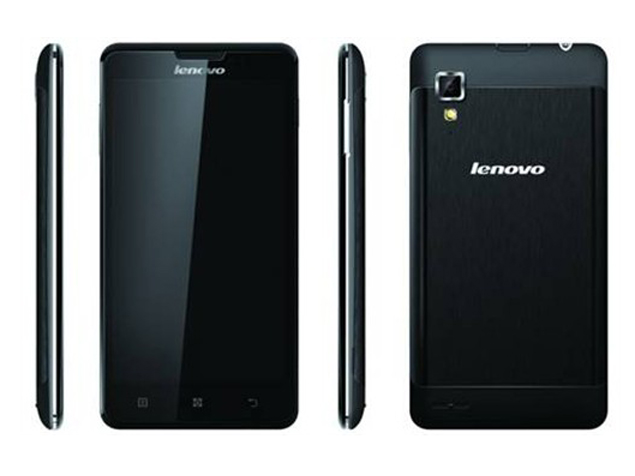- Home
- Mobiles
- Phone Finder
- Lenovo Phones
- Lenovo P780
Lenovo P780
- Lenovo
- 92 User Ratings
- Last Updated: 31st December 2024
-
Display 5.00-inch (720x1280)
-
Processor 1.2GHz quad-core
-
Front Camera 0.3MP
-
Rear Camera 8MP
-
RAM 1GB
-
Storage 4GB
-
Battery Capacity 4000mAh
-
OS Android 4.2
Lenovo P780 in Pictures
-
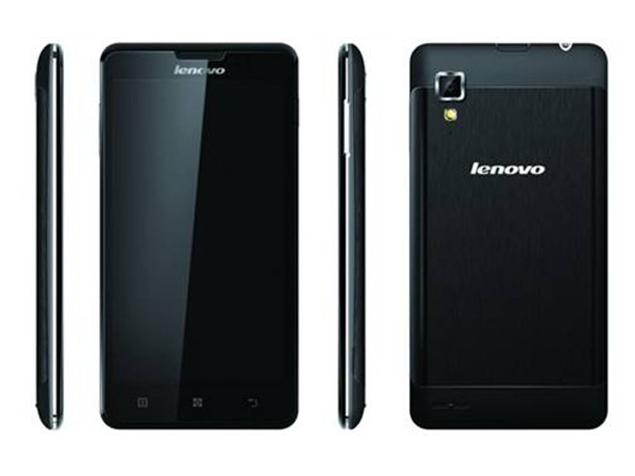 Design (1 image)
Design (1 image) -
 Gallery (14 images)
Gallery (14 images)
Lenovo P780 Review
- Design
- Display
- Software
- Performance
- Battery Life
- Camera
- Value for Money
- Good
- Great battery backup
- Decent performance
- Bad
- Limited built-in storage
- Dim, highly-reflective screen
We've seen the specifications and features war bring down prices of smartphones that pack in everything you can imagine at an affordable price. Today, You can get a modern smartphone, complete with some very decent hardware at less than Rs. 20,000.
However, there's one area which has always been a little neglected in the race for multi-core processors and full-HD displays, and it is one of the major pain points encountered by most smartphone users. No prizes for guessing, we're talking about the battery back-up offered by smartphones.
There have been some niche offerings by relatively small players, like Salora, that have tried to address this problem, but they've not been able to offer an attractive proposition in terms of features and quality of hardware. Lenovo promises to change this with its P780 Android smartphone that's equipped with a giant 4,000 mAh battery. The dual-SIM Android smartphone also sports decent hardware specifications and is easy on the eyes.
Is the Lenovo P780 the first smartphone that can last for days and not hours and yet deliver a modern smartphone experience? We find out in our review.
Build/ Design
The Lenovo P780 is definitely not a looker, but considering that it packs in a giant battery, it's not too bulky and cumbersome to carry around. The plain-looking device comes in Black colour and looks like any rectangular slab with rounded edges.
The front of the Lenovo P780 is dominated by its 5-inch IPS display, with the three capacitive touch keys for navigation placed just below it, and the earpiece grille, which also houses a notification LED, located above it, along with the front-facing camera, sensor array and Lenovo branding.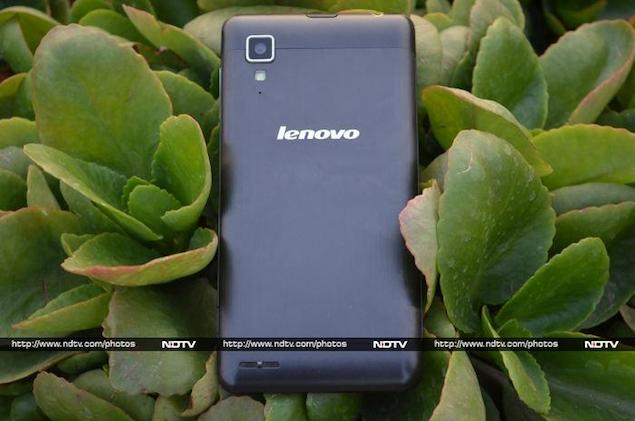 A thin chrome frame runs around the Lenovo P780's edges, making space for the volume rocker key at the right edge, and the power/screen-lock key, the Micro-USB port (protected by a flap) and a 3.5-mm headset jack, at the top edge. We'd have preferred the power key to be placed on the right edge instead of the top, as the current placement makes it a little cumbersome to use.
A thin chrome frame runs around the Lenovo P780's edges, making space for the volume rocker key at the right edge, and the power/screen-lock key, the Micro-USB port (protected by a flap) and a 3.5-mm headset jack, at the top edge. We'd have preferred the power key to be placed on the right edge instead of the top, as the current placement makes it a little cumbersome to use.
The back of the Lenovo P780 is partially made of plastic with matte finish and sports a removable metal cover that has a brushed aluminium finish in dark grey colour.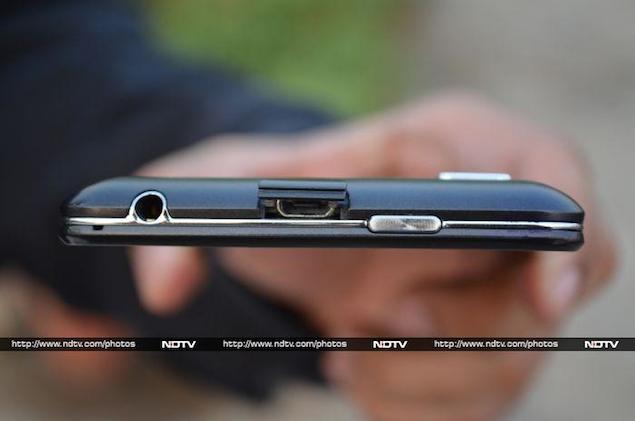 The back of the Lenovo P780 features the 8-megapixel camera lens and an LED flash, located a bit towards the left. There's some Lenovo branding on the metal cover. The speaker grill is located towards the bottom.
The back of the Lenovo P780 features the 8-megapixel camera lens and an LED flash, located a bit towards the left. There's some Lenovo branding on the metal cover. The speaker grill is located towards the bottom.
Removing the metal cover reveals the two SIM card slots, a microSD card slot, a Reset button and the Lenovo P780's non-removable 4,000 mAh battery.
Display
The Lenovo P780 sports a 5-inch IPS display with a resolution of 720x1280 pixels (294ppi) and 16 million colour gamut.
Text and images on the Lenovo P780's display looked crisp and sharp. The display's colour reproduction was also accurate.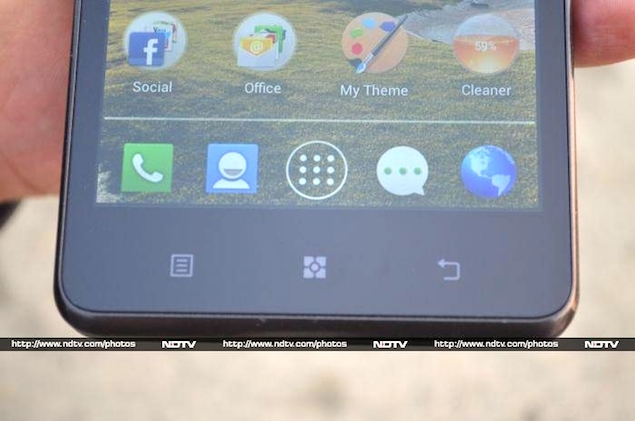 Viewing angles were above average, however, the Lenovo P780's display was very reflective, leading to poor sunlight legibility. We also found that the backlight levels were low, resulting in less than optimum screen brightness, even at full brightness levels in the phone's settings.
Viewing angles were above average, however, the Lenovo P780's display was very reflective, leading to poor sunlight legibility. We also found that the backlight levels were low, resulting in less than optimum screen brightness, even at full brightness levels in the phone's settings.
Software/ User Interface
The Lenovo P780 runs Android 4.2.1 with a heavily skinned user interface. While the phone retains the same navigation structure of home screens (complete with widgets and app shortcuts), an app launcher and a notifications tray (with toggles for settings), all the UI elements have been tinkered with to make the interface look different from other Android phones.
The UI layer on the P780 goes beyond just app icons and menus, extending even to native apps like the Calculator, Clock, Camera and the phone's image gallery (which for some reason is called SuperGallery).
The Lenovo P780's software also includes support for themes and offers six preloaded themes that bring changes to the phone's colour scheme, background wallpaper and app icons.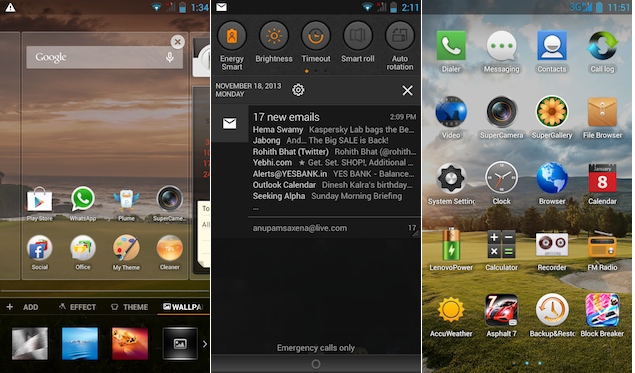 There are up to nine customisable home screens on the Lenovo P780's UI which can be filled with app shortcuts and widgets. Long pressing on any of the Home screens brings up a menu that lets you add app shortcuts, folders, and widgets; tinker with transition effects that are seen while navigating across home screens, and change the UI theme and wallpaper. Pinching in on the home screen brings up a preview of all the home screens, allowing you to add or remove them.
There are up to nine customisable home screens on the Lenovo P780's UI which can be filled with app shortcuts and widgets. Long pressing on any of the Home screens brings up a menu that lets you add app shortcuts, folders, and widgets; tinker with transition effects that are seen while navigating across home screens, and change the UI theme and wallpaper. Pinching in on the home screen brings up a preview of all the home screens, allowing you to add or remove them.
The Lenovo P780 offers a lot of customisation options, and you can even change the granular UI elements like icon text size, icon size, icon text style, and decoration. People who like to play around with the UI of their phones will appreciate this, though people who just like the stock Android experience will not feel at home. Custom launchers can be used if you don't like the default Lenovo Launcher.
The three capacitive buttons on the Lenovo P780 - Home, Menu and Back - help in navigating through the phone, with the Menu button also doubling up as an app switcher on long press. The Home button launches Google Now on long press.
The notification tray on the Lenovo P780 features a settings shortcut and a clear-all notifications button, along with expandable notifications (expanded with the two-finger pull gesture). It features setting toggles for quick access to Energy Smart (power saving mode), Brightness, Screen backlight timeout, Auto rotation, Airplane Mode, Battery status, Wi-Fi, Bluetooth, GPS, Mobile data connection and User (audio) Profiles.
You also get lock-screen widgets on the Lenovo P780 - an Android 4.2 feature. You can choose from the Calendar, Camera, Gmail, Google Now and Google+ widgets in addition to widgets offered by third-party apps installed on your phone. These widgets offer 'glance-able' information from the apps and allow users to perform certain app actions even when the phone is locked.
The Lenovo P780 also offers another Android 4.2 feature, Daydream, which displays photo albums or the clock while the phone's charging. 'Wireless mirroring', introduced with Android 4.2, is not supported by the P780.
The phone also offers FM radio and FM radio recording. The Lenovo P780 also offers some gesture controls, like the ability to answer the phone by bringing it near to the ear; slide the edge of the screen to change the layoutl decrease the ringtone volume when the phone is picked up, and increase the volume when it's put inside the pocket.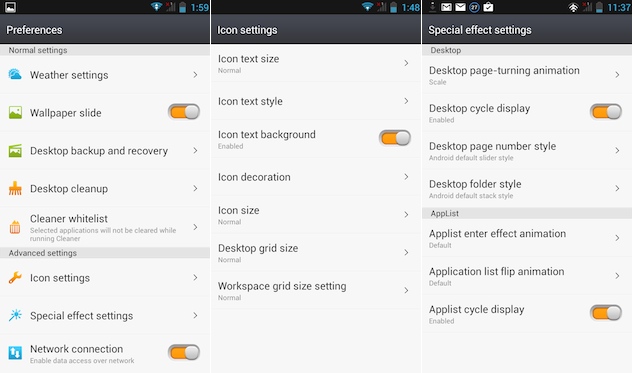 Lenovo offers a number of pre-installed apps on the P780, including a File Browser, Voice Recorder, a Backup & Restore utility, CamCard and CamScanner, Flashlight, Kingsoft Office, Route 66 Maps and Navigation, Norton Mobile security software, and the UC Browser. It also comes with games like Asphalt 7, Block Breaker, and Little Big City.
Lenovo offers a number of pre-installed apps on the P780, including a File Browser, Voice Recorder, a Backup & Restore utility, CamCard and CamScanner, Flashlight, Kingsoft Office, Route 66 Maps and Navigation, Norton Mobile security software, and the UC Browser. It also comes with games like Asphalt 7, Block Breaker, and Little Big City.
Camera
The Lenovo P780 comes with an 8-megapixel rear camera and a VGA front facing one.
Lenovo also ships the P780 with its own camera app that it calls SuperCamera, which is not much different from the stock Android 4.2 counterpart.
The Lenovo P780's SuperCamera app allows you to shoot photos in Auto, Burst, Panorama, Night portrait, HDR, Low light, Macro, Smile Detection and Timer modes. You can also tinker with basic settings, like changing the resolution; adjusting the exposure, brightness, contrast, saturation, sharpness, and image quality; as well as advanced settings like ISO, white balance, and Stroboscopic, among others.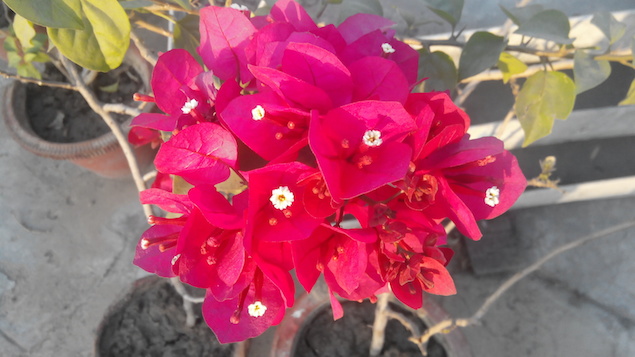 The Lenovo P780's SuperCamera app also offers about 24 Lens, Magic and Colour effects, which are essentially filters to play and experiment with images.
The Lenovo P780's SuperCamera app also offers about 24 Lens, Magic and Colour effects, which are essentially filters to play and experiment with images.
The rear camera on the Lenovo P780 takes good quality pictures in daylight with accurate colour reproduction, though we felt that the images did miss out on detail while trying to eliminate noise.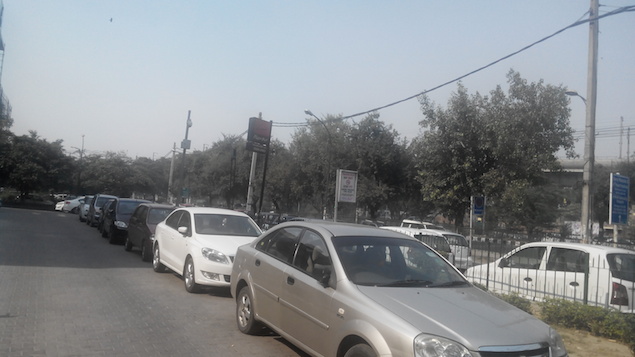 Pictures shot indoors in sufficient light also looked good, however, the Lenovo P780's camera struggled to take low-light shots. Low-light shots featured a high amount of noise and lacked clarity.
Pictures shot indoors in sufficient light also looked good, however, the Lenovo P780's camera struggled to take low-light shots. Low-light shots featured a high amount of noise and lacked clarity.
The Lenovo P780's rear camera supports 1080p video recording and we were able to shoot decent quality videos with it. The front-facing camera on the Lenovo P780 is strictly functional, and can be used for casual video chats.
The front-facing camera on the Lenovo P780 is strictly functional, and can be used for casual video chats.
Performance
The Lenovo P780 is powered by the quad-core 1.2GHz MediaTek MT6589 processor with 1GB of RAM, and the PowerVR SGX544MP GPU. There is 4GB of built-in storage, 2.1GB of which is available to the user.
With Android 4.2 Jelly Bean, the overall experience of navigation through the interface was pleasant, thanks to the phone's quad-core processor. We did not experience any lag while launching apps, playing games, scrolling web pages or switching between apps. It is safe to say that performance wise, the Lenovo P780 performs adequately. We were able to play games like Jetpack Joyride, Subway Surfers, without encountering any lag. However, we did notice some frame drops in graphics intensive games like Asphalt 7.
We were also able to play full-HD clips on the Lenovo P780, with the phone supporting formats like .AVI natively, though we experienced some issues with audio while playing an MKV format video. This was easily fixed by downloading a third-party video player.
The speaker on the Lenovo P780 delivers average quality sound at high volume levels, but there's some minor muffle when the phone lies on its back, as the speaker grille is located on that side. The headphones that come with the phone offer average quality sound output. Call quality was good, during our testing process. The dual-SIM phone supports one 3G connection and one 2G line. 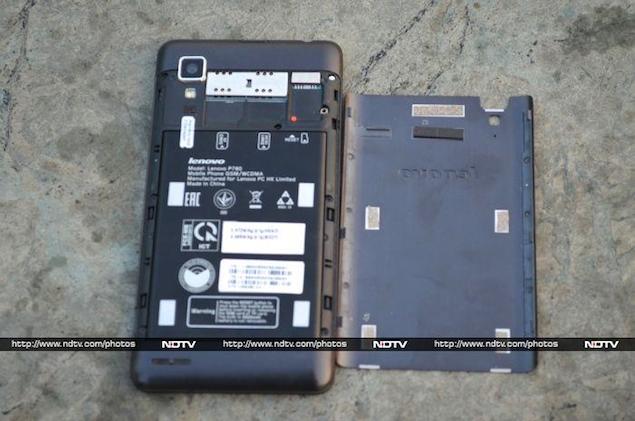 The real strength of the phone, however, is its 4,000 mAh battery, which lasts nearly two full days, based on our experience.
The real strength of the phone, however, is its 4,000 mAh battery, which lasts nearly two full days, based on our experience.
With medium to heavy usage, including 1-1.5 hours of phone calls, two e-mail accounts with push notifications, screen at maximum brightness, playing some music and video clips (about an hour), casual web browsing, Twitter notifications and WhatsApp chats, the phone lasted 16-17 hours. We had put the phone on Wi-Fi for about a few hours while the rest of the duration it was connected to data via 3G. We had turned off auto-brightness, and the phone was on the highest level of brightness. Altering these settings might help in running the phone for a longer duration, depending on your usage pattern.
Lenovo also offers a LenovoPower utility app that allows you to select among three preset power modes, in addition to a custom one. The app also offers toggles for Wi-Fi, data, screen brightness and timeout, sync, GPS, Bluetooth, and Airplane modes. You can also select other power-saving options, including one that intelligently controls the CPU frequency to optimise power consumption, or clear up background processes. It also lets you track software and hardware power consumption.
Verdict
The Lenovo P780 is a step in the right direction. While the major focus of smartphone makers' innovation has been on improving the hardware specifications, and stuffing in features, power optimisation and conveniently-long battery backup have been largely neglected.
The P780 frees you from the shackles of lugging around a portable charger, and offers decent performance, at the same time. The phone launched at a price point of Rs. 22,529 but is available for roughly Rs.19,000.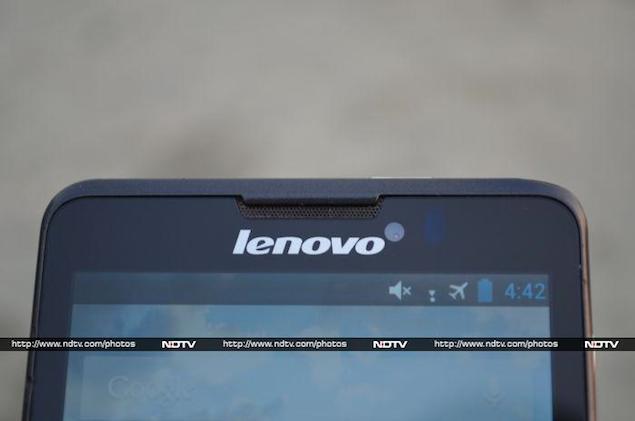 It may not offer a full-HD screen, and lacks a gigabyte of RAM, however, we'd still recommend the Lenovo P780 over phones like the Micromax Canvas Turbo.
It may not offer a full-HD screen, and lacks a gigabyte of RAM, however, we'd still recommend the Lenovo P780 over phones like the Micromax Canvas Turbo.
We just wish Lenovo included more internal storage, a better front camera and a brighter screen. Other than these niggles, it's one of the only phones that offers great battery backup and includes a large number of features, in this price segment.
Price: Rs. 22,529
Lenovo P780 Summary
Lenovo P780 mobile was launched in June 2013. The phone comes with a 5.00-inch touchscreen display offering a resolution of 720x1280 pixels at a pixel density of 294 pixels per inch (ppi). Lenovo P780 is powered by a 1.2GHz quad-core processor. It comes with 1GB of RAM. The Lenovo P780 runs Android 4.2 and is powered by a 4000mAh non-removable battery.
As far as the cameras are concerned, the Lenovo P780 on the rear packs 8-megapixel camera. It sports a 0.3-megapixel camera on the front for selfies.
Lenovo P780 is based on Android 4.2 and packs 4GB of inbuilt storage that can be expanded via microSD card (up to 32GB). The Lenovo P780 is a dual-SIM (GSM and GSM) mobile that accepts Regular and Regular cards. The Lenovo P780 measures 143.00 x 73.00 x 9.95mm (height x width x thickness) and weighs 176.00 grams.
Connectivity options on the Lenovo P780 include Wi-Fi, GPS, Bluetooth v3.00, FM radio, and 3G. Sensors on the phone include accelerometer, ambient light sensor, gyroscope, and proximity sensor.
As of 31st December 2024, Lenovo P780 price in India starts at Rs. 15,410.
Lenovo P780 Price in India
| Product Name | Price in India |
|---|---|
| Lenovo P780 (1GB RAM, 4GB) - Black | ₹ 15,410 |
-
- 10% off on BOB Credit Card EMI Transaction.
- 10% off on Bank of Baroda Mastercard Debit
- 10% off Federal Bank Credit Card, upto ₹3,000
- CoinDCX Get Bitcoin Worth ₹
- Mi with Google Assistant Smart
- No Cost EMI on Flipkart Axis Bank Credit Card
- 5% Cashback on Flipkart Axis Bank Card
- Win a Surprise Cashback Coupon
- Flipkart Pay Later Sign-Up Offer
Lenovo P780 price in India starts from ₹ 15,410. The lowest price of Lenovo P780 is ₹ 15,410 at Flipkart on 31st December 2024.
Lenovo P780 Full Specifications
| Brand | Lenovo |
| Model | P780 |
| Price in India | ₹15,410 |
| Release date | June 2013 |
| Form factor | Bar |
| Dimensions (mm) | 143.00 x 73.00 x 9.95 |
| Weight (g) | 176.00 |
| Battery capacity (mAh) | 4000 |
| Removable battery | No |
| Screen size (inches) | 5.00 |
| Touchscreen | Yes |
| Resolution | 720x1280 pixels |
| Pixels per inch (PPI) | 294 |
| Processor | 1.2GHz quad-core |
| RAM | 1GB |
| Internal storage | 4GB |
| Expandable storage | Yes |
| Expandable storage type | microSD |
| Expandable storage up to (GB) | 32 |
| Rear camera | 8-megapixel |
| Rear flash | LED |
| Front camera | 0.3-megapixel |
| Operating system | Android 4.2 |
| Wi-Fi | Yes |
| GPS | Yes |
| Bluetooth | Yes, v 3.00 |
| NFC | No |
| Infrared | No |
| USB OTG | No |
| Headphones | 3.5mm |
| FM | Yes |
| Number of SIMs | 2 |
| Wi-Fi Direct | No |
| Mobile High-Definition Link (MHL) | No |
| SIM 1 | |
| SIM Type | Regular |
| GSM/CDMA | GSM |
| 3G | Yes |
| 4G/ LTE | No |
| Supports 4G in India (Band 40) | No |
| SIM 2 | |
| SIM Type | Regular |
| GSM/CDMA | GSM |
| 3G | No |
| 4G/ LTE | No |
| Supports 4G in India (Band 40) | No |
| Compass/ Magnetometer | No |
| Proximity sensor | Yes |
| Accelerometer | Yes |
| Ambient light sensor | Yes |
| Gyroscope | Yes |
| Barometer | No |
| Temperature sensor | No |
Lenovo P780 Competitors
-
 Lenovo P780
₹15,410
Lenovo P780
₹15,410
Lenovo P780 User Review and Ratings
92 reviews
-
Using this Lenovo P780 phone for last 80 daysNitin Shrivastava (May 9, 2014) on Gadgets 360Okay, so i am using this Lenovo P780 phone for last 80 days and was waiting until now to post my hands on review. I bought this phone from Ebay at 16800/-. its a 4GB version and i am damn happy with this phone..there is no network issue that i have faced, very good Display, it does support OTG and transfer speed is very fast, WiFi direct support (you should install app "Software data cable" to best use of WiFi direct feature). Dual Sim only 1st Sim 3G..Very less internal memory (1.3 GB)to install Apps but you can move or install apps to External memory card however i think that has been increased in new 8 GB versions...Lenovo UI is one of the best UI i have used in any Android Phone and you can modify as you want..no need for me to say about battery, that is the best feature of this Phone..Phone does have option to Enable Push Message but it does not work so you wont receive data use or balance message after call.(one user suggested to use app "USSD to Notification" to resolve this issue and will do and post ). Display is good but its very reflecting in direct sun light so you will Die multiple times in subway surfer game if you play it on Open in day :b ...Sound quality is damn good on Speakers and also on earphones.. Looks and feel of this phone is better then any other phone available in market till the range of 28000....this phone easily worth of between 23000 to 25000...but in 17000 you are getting more then you can bargain for..Simply just go for it and you will not regret your decision..best of luck..NitinIs this review helpful?(1) Reply
-
nice mobile with very usable featuresShankar (Apr 17, 2014) on Gadgets 360i had recently bought my lenovo p780 4gb mobile.i am really happy with it features n perfomance.screen resolution is good,design is good,voice clarity n signals r good. best thing i had never seen a mobile with such long battery life.i am tried 8 hours of browsing continous n only 40% battery is consumed.whish i didnt experince in my preivious mobile like nokia,samsung. in one the best mobile in market now.Is this review helpful?(1) Reply
-
good phone with decent hardware and great battery back up,but battery back up tends to decrease with timeVikram Thakur Singh (May 10, 2014) on Gadgets 360Lenovo p780: It?s been a while since Lenovo entered in mobile and tablet market segment. and it has released some of the good phones like Lenovo k900, lenovo p780. Lenovo p780 an quardcore of mediatek cortex A7 mtk6589 1.2ghz coupled with power vr sgx544 gpu.Lenovo p780 got 1gb ram, 5 inch display with 294 ppi (pixels per inch) with otg (on the go) , 8mp camera with LED, 4000mah non-removable battery my suggestion is not to buy 4gb one instead go for 8gb one DISPLAY:As mentioned above this is an 5"phone with 720p IPS LCD captive touchscreen screen in a world of HD screens, display is quite a bit reflective but its ok and you don't face much of a problem operating mobile under sunlight, display brightness is good not too low nor too bright CAMERA:when coming to camera front this holds 8mp camera with an LED flash camera settings are been divided into basic, advance and others. The photos taken in the day time are good for what you pay, photos taken in the night time are quite a bit grainy but it?s ok. we can add various lens effects, magic effects, color effects etc there are also different modes of shooting like burst mode, night portrait, HDR, panorama, low light, micro etc.overall when coming to camera front camera quality is good you get what you pay for HARDWARE:when coming to the hardware front Lenovo P780 has got quite decent hardware with quardcore processor of cortex A7 of mediatek mtk6589 of 1.2ghz coupled with an power vr sgv544 gpu of 234~mhz.when we compare Lenovo p780 of about 16000/- PERFORMANCE:Lenovo p780 got mediatek mtk6589 1.2ghz quardcore processor coupled with powervr sgx544 gpu. Jumping from one app to other app was never been a problem, phone was never been sluggish operates quite good (a lot better than Samsung s duos which I had before) and when taking pictures in burst mode of Lenovo p780 photos were taken very quickly GAMING:when coming to gaming front Lenovo p780 is powered with powervr sgx544 gpu, I have played so many games in this phone like real racing 3,modern combat 4,rayman,subway surfer, temple run oz ,temple run 2..etcthis phone has never given me much of a problem when coming to gaming front (It used to take a while to load the games but after loading there was no problem) and I think the one who loves to play games with huge battery back up can go for Lenovo p780 without any doubt BATTERY BACKUP:Lenovo p780 is powered with 4000mah battery which is really great this phone runs easily up to two days with 5hrs to 6hrs of gaming, web browsing of abt 6hrs to 7hrs, few calls, watching few videos, taking few photos and videos and still you got your phone alive on the next day CONCLUSION:this midrange is a phone with great battery back up coupled with decent hardware , there is no doubt that if you want a phone which can play decent games, take decent photos, coupled with a great battery back up and few different features.cons:battery tends to decrese with time,runs on 4.2,pros:decent hardware,back upIs this review helpful?Reply
-
DisappointedRamit Rajvanshi (May 30, 2015) on Gadgets 360I bounght my Lenovo P 780 last year in March. This year in April I stared having issues. Very dissatisfied. My phone had a problem of low mobile signals, started in Jan 2015 and in April it started getting switched offf by itself. One day got off and was not getting switched on. Took the phone to service center and was told that they can not do anything accept changing the motherboard, which is 70 to 80% cost of the phone hence buy a new phone. As the mobile is out of warrenty by just one month. I mean is this why I trusted Lenovo and purchased the phone. Lenovo should be able to rectify the issue, there could be some minimal cost.Is this review helpful?Reply
-
IPS LCD C Touchscreen cost 8500Abhilash Saju (May 5, 2014) on Gadgets 360IPS LCD C Touchscreen cost 8500 when you buy any other mobile like samsung htc tocuchscreen ll get for 2000 or belowIs this review helpful?(1) Reply
Lenovo P780 News
Lenovo P780 Video

Other Lenovo Phones
Related Mobile Phones
- Best Mobile Phones
- Best Camera Mobile Phones
- Best Mobile Phones Under 10000
- Best Mobile Phones Under 15000
- Best Mobile Phones Under 20000
- Best Mobile Phones Under 25000
- Best Mobile Phones Under 30000
- Best Mobile Phones Under 35000
- Best Mobile Phones Under 40000
- Mobile Phones between 10000 to 15000
- Best Camera Mobile Phones Under 15000
- Best Camera Mobile Phones Under 20000
- Best Camera Mobile Phones Under 25000
- Best Camera Mobile Phones Under 30000
- Best 5G Mobile Phones Under 15000
- Best 5G Mobile Phones Under 20000
- Best 5G Mobile Phones Under 25000
- Best 5G Mobile Phones Under 30000
- Best 5G Mobile Phones Under 40000
- Best 5G Mobile Phones Under 50000
- Samsung Galaxy Unpacked 2025
- ChatGPT
- Redmi Note 14 Pro+
- iPhone 16
- Apple Vision Pro
- Oneplus 12
- OnePlus Nord CE 3 Lite 5G
- iPhone 13
- Xiaomi 14 Pro
- Oppo Find N3
- Tecno Spark Go (2023)
- Realme V30
- Best Phones Under 25000
- Samsung Galaxy S24 Series
- Cryptocurrency
- iQoo 12
- Samsung Galaxy S24 Ultra
- Giottus
- Samsung Galaxy Z Flip 5
- Apple 'Scary Fast'
- Housefull 5
- GoPro Hero 12 Black Review
- Invincible Season 2
- JioGlass
- HD Ready TV
- Laptop Under 50000
- Smartwatch Under 10000
- Latest Mobile Phones
- Compare Phones
- Vivo Y200+
- Lava Yuva 2 5G
- OnePlus Ace 5
- OnePlus Ace 5 Pro
- Oppo A5 Pro 5G
- Vivo Y29 5G
- Honor Magic 7 RSR Porsche Design
- Moto G15 Power
- Asus Zenbook S 14
- MacBook Pro 16-inch (M4 Max, 2024)
- Honor Pad V9
- Tecno Megapad 11
- boAt Enigma Gem
- boAt Enigma Daze
- Sony 65 Inches Ultra HD (4K) LED Smart TV (KD-65X74L)
- TCL 55 Inches Ultra HD (4K) LED Smart TV (55C61B)
- Sony PlayStation 5 Pro
- Sony PlayStation 5 Slim Digital Edition
- Blue Star 1.5 Ton 3 Star Inverter Split AC (IC318DNUHC)
- Blue Star 1.5 Ton 3 Star Inverter Split AC (IA318VKU)

